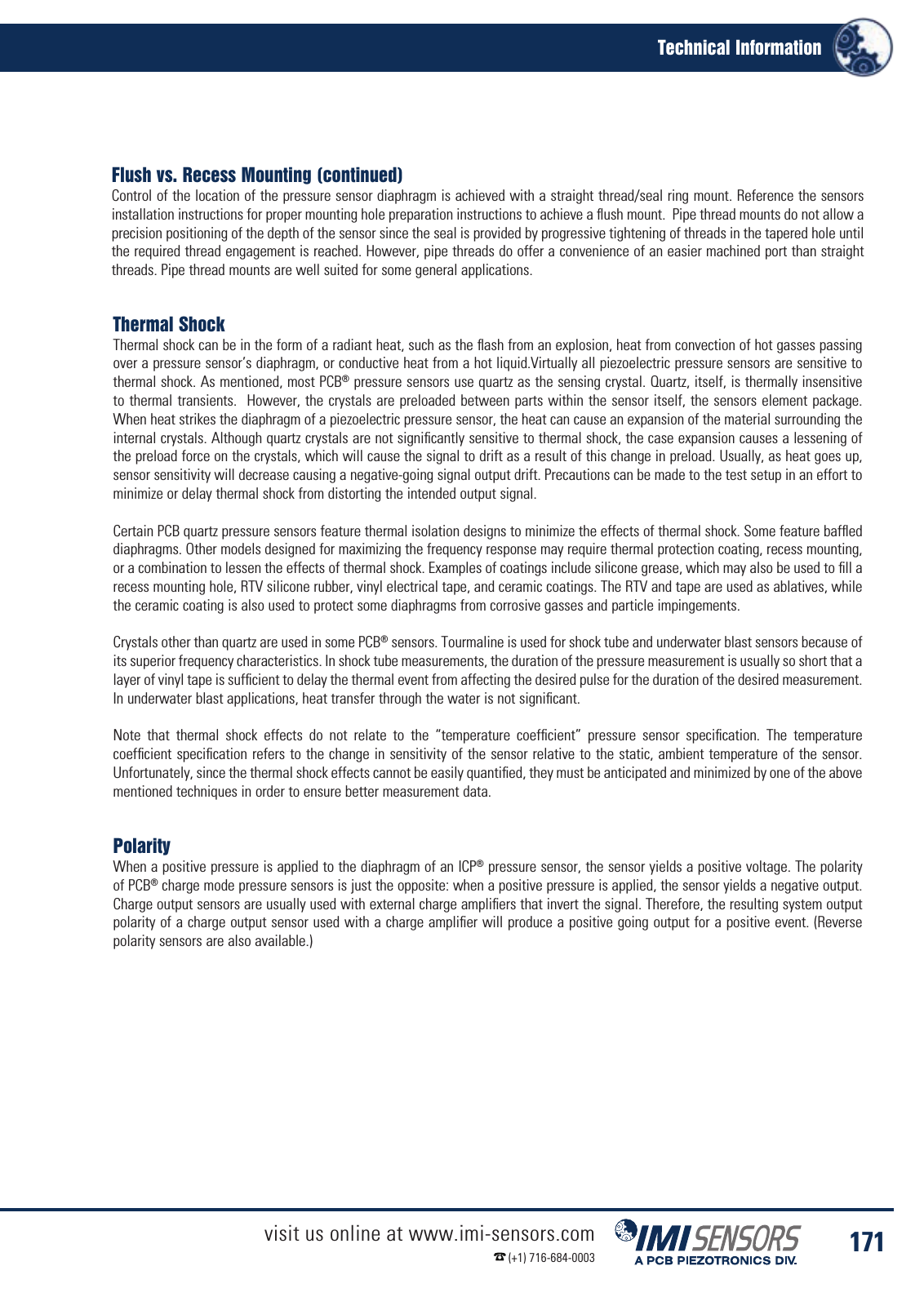IMI Industrial Vibration Sensors Katalog Seite 174
Hinweis: Dies ist eine maschinenlesbare No-Flash Ansicht.Klicken Sie hier um zur Online-Version zu gelangen.
Inhalt
Thermal Shock Thermal shock can be in the form of a radiant heat such as the flash from an explosion heat from convection of hot gasses passing over a pressure sensor s diaphragm or conductive heat from a hot liquid Virtually all piezoelectric pressure sensors are sensitive to thermal shock As mentioned most PCB pressure sensors use quartz as the sensing crystal Quartz itself is thermally insensitive to thermal transients However the crystals are preloaded between parts within the sensor itself the sensors element package When heat strikes the diaphragm of a piezoelectric pressure sensor the heat can cause an expansion of the material surrounding the internal crystals Although quartz crystals are not significantly sensitive to thermal shock the case expansion causes a lessening of the preload force on the crystals which will cause the signal to drift as a result of this change in preload Usually as heat goes up sensor sensitivity will decrease causing a negative going signal output drift Precautions can be made to the test setup in an effort to minimize or delay thermal shock from distorting the intended output signal Certain PCB quartz pressure sensors feature thermal isolation designs to minimize the effects of thermal shock Some feature baffled diaphragms Other models designed for maximizing the frequency response may require thermal protection coating recess mounting or a combination to lessen the effects of thermal shock Examples of coatings include silicone grease which may also be used to fill a recess mounting hole RTV silicone rubber vinyl electrical tape and ceramic coatings The RTV and tape are used as ablatives while the ceramic coating is also used to protect some diaphragms from corrosive gasses and particle impingements Crystals other than quartz are used in some PCB sensors Tourmaline is used for shock tube and underwater blast sensors because of its superior frequency characteristics In shock tube measurements the duration of the pressure measurement is usually so short that a layer of vinyl tape is sufficient to delay the thermal event from affecting the desired pulse for the duration of the desired measurement In underwater blast applications heat transfer through the water is not significant Note that thermal shock effects do not relate to the temperature coefficient pressure sensor specification The temperature coefficient specification refers to the change in sensitivity of the sensor relative to the static ambient temperature of the sensor Unfortunately since the thermal shock effects cannot be easily quantified they must be anticipated and minimized by one of the above mentioned techniques in order to ensure better measurement data Polarity When a positive pressure is applied to the diaphragm of an ICP pressure sensor the sensor yields a positive voltage The polarity of PCB charge mode pressure sensors is just the opposite when a positive pressure is applied the sensor yields a negative output Charge output sensors are usually used with external charge amplifiers that invert the signal Therefore the resulting system output polarity of a charge output sensor used with a charge amplifier will produce a positive going output for a positive event Reverse polarity sensors are also available Flush vs Recess Mounting continued Control of the location of the pressure sensor diaphragm is achieved with a straight thread seal ring mount Reference the sensors installation instructions for proper mounting hole preparation instructions to achieve a flush mount Pipe thread mounts do not allow a precision positioning of the depth of the sensor since the seal is provided by progressive tightening of threads in the tapered hole until the required thread engagement is reached However pipe threads do offer a convenience of an easier machined port than straight threads Pipe thread mounts are well suited for some general applications Technical Information visit us online at www imi sensors com 1 716 684 0003 171
